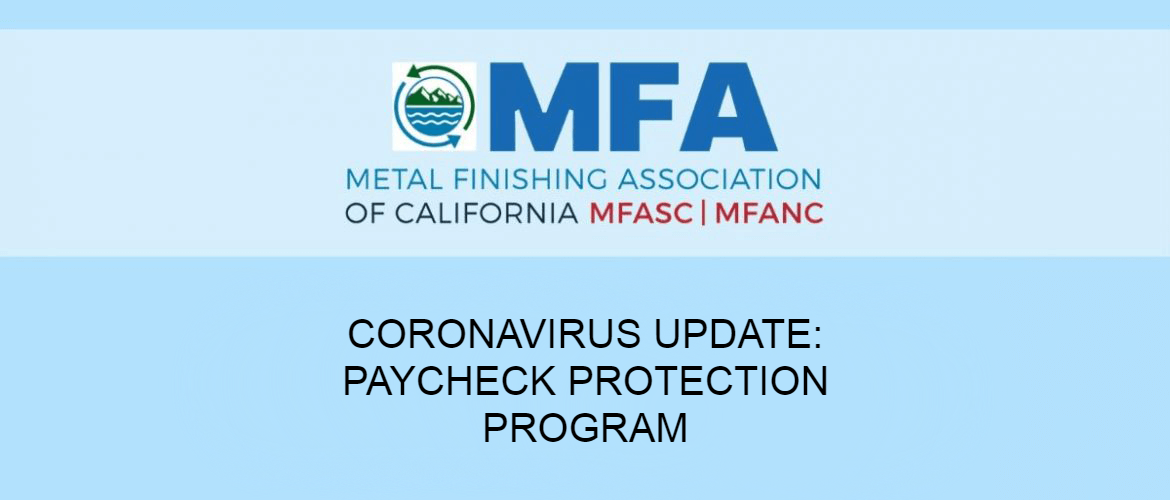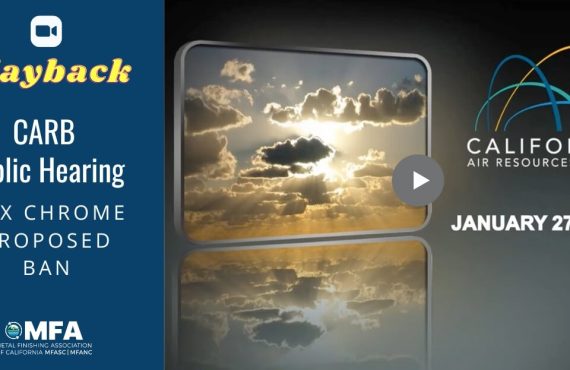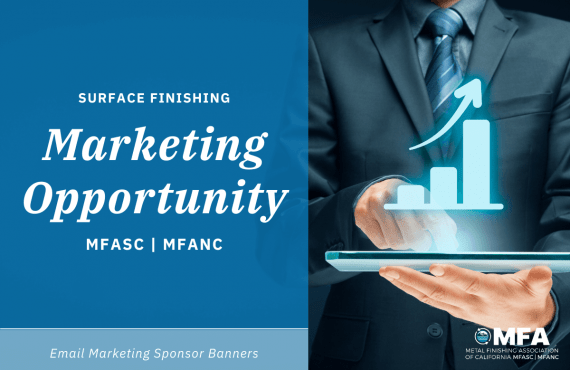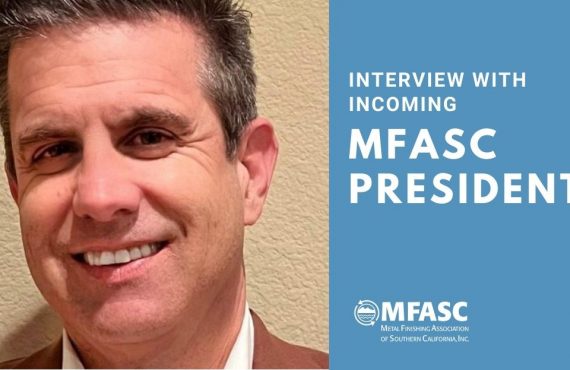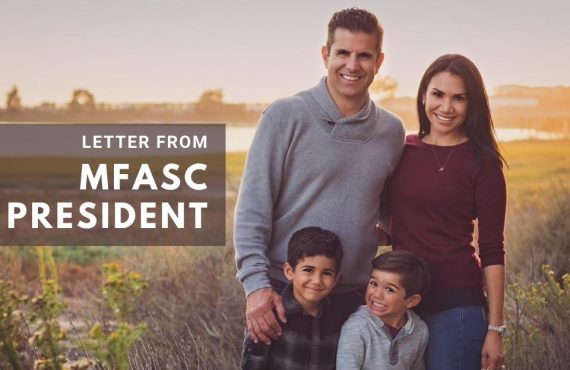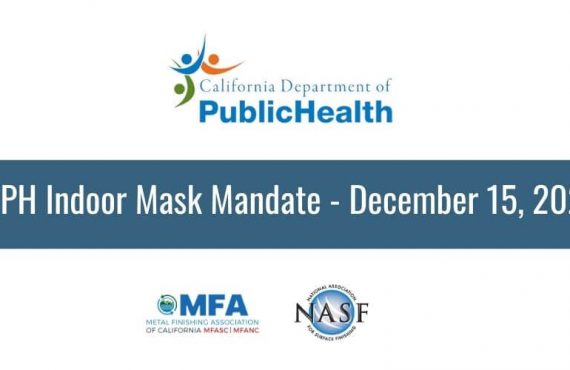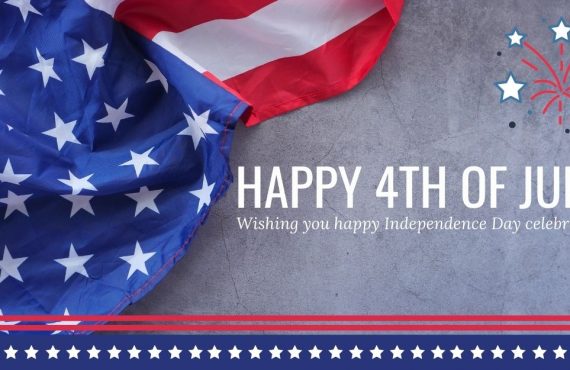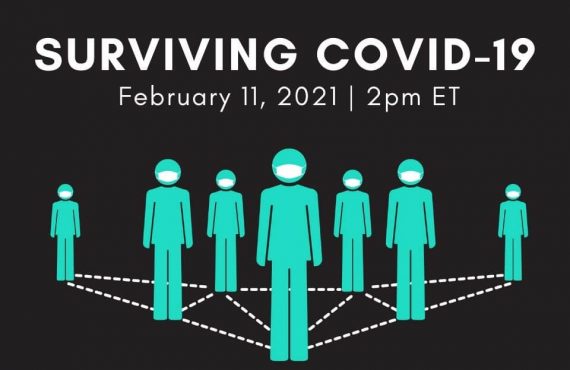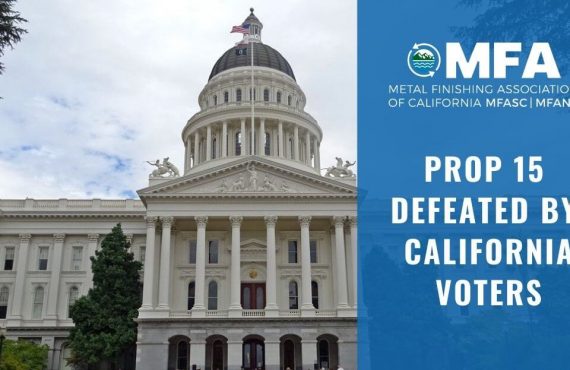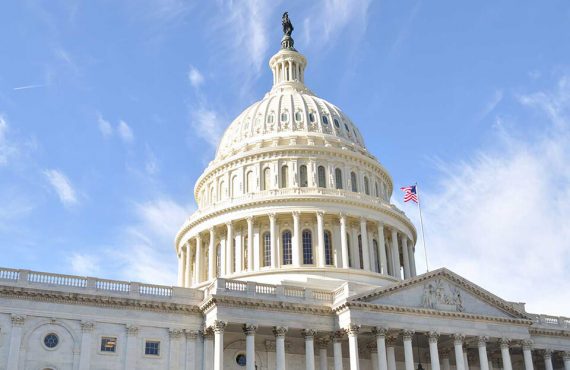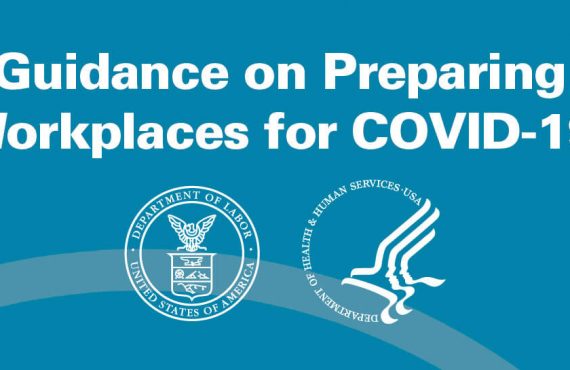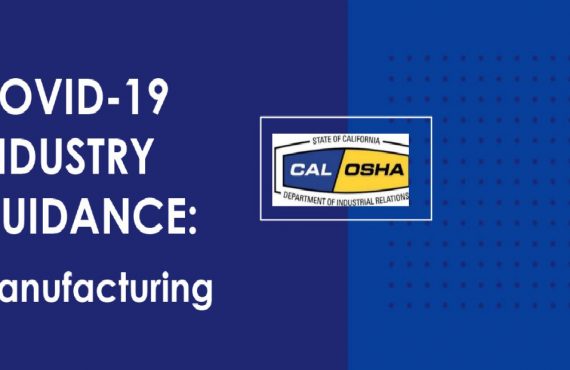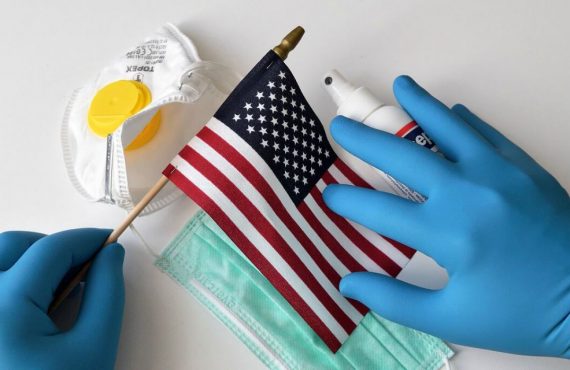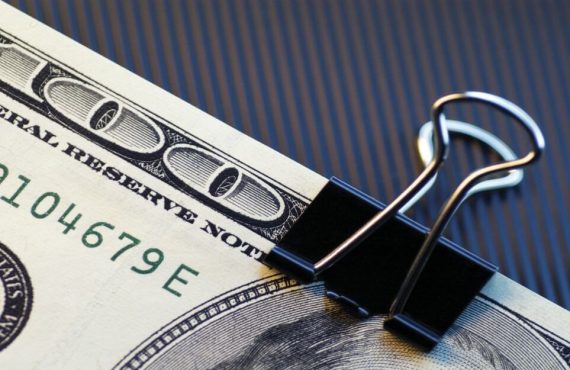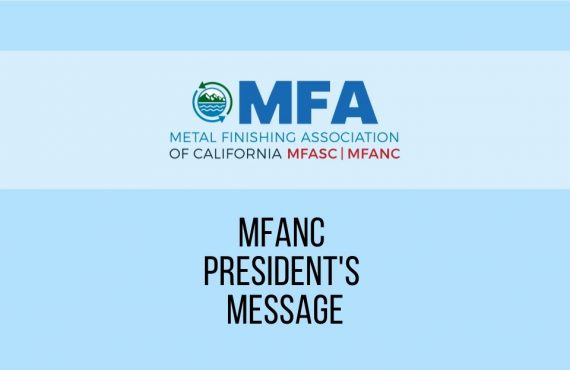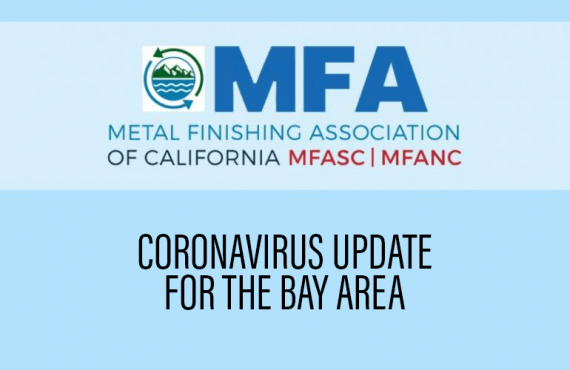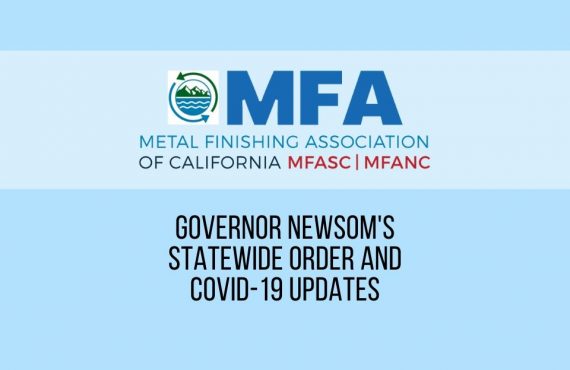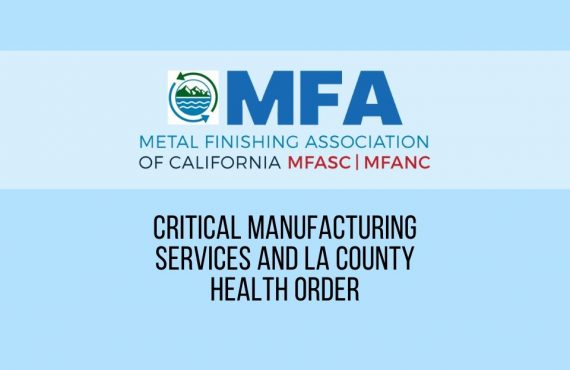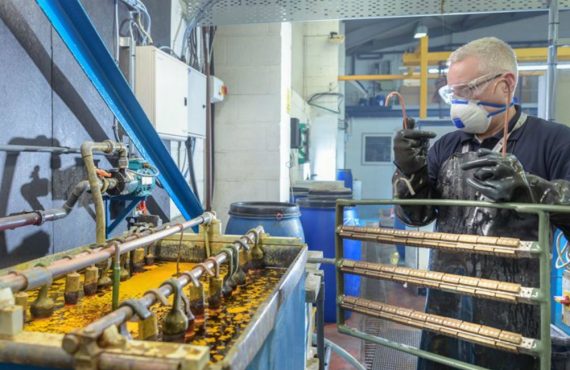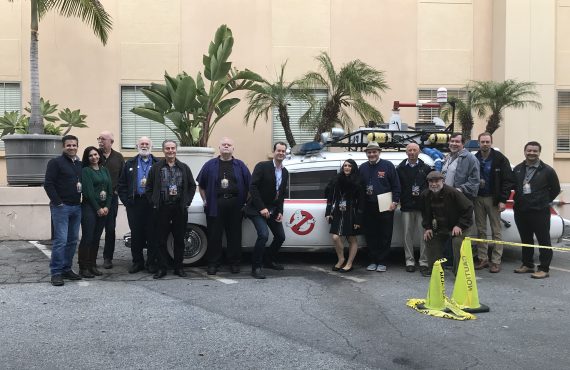U.S. Treasury Department Issues further information and FAQs today under the CARES Act
Since our recent NASF update and SBA Guide to the new Paycheck Protection Program, some member companies have had trouble with the application and submission process to receive relief, as the program’s roll out has been challenging.
Today the U.S. Department of Treasury has issued further information below and FREQUENTLY ASKED QUESTIONS that can be found HERE.
US Department of Treasury: Paycheck Protection Program (PPP) Information Sheet is as follows:
BORROWERS
The Paycheck Protection Program authorizes up to $349 billion in forgivable loans to small businesses to pay their employees during the COVID-19 crisis. All loan terms will be the same for everyone.
The loan amounts will be forgiven as long as:
- The loan proceeds are used to cover payroll costs, and most mortgage interest, rent, and utility costs over the 8-week period after the loan is made; and
- Employee and compensation levels are maintained.
Payroll costs are capped at $100,000 on an annualized basis for each employee. Due to the likely high subscriptions, it is anticipated that not more than 25% of the forgiven amount may be for non-payroll costs.
Loan payments will be deferred for 6 months.
When can I apply?
- Starting April 3, 2020, small businesses and sole proprietorships can apply for and receive loans to cover their payroll and other certain expenses through existing SBA lenders.
- Starting April 10, 2020, independent contractors and self-employed individuals can apply for and receive loans to cover their payroll and other certain expenses through existing SBA lenders.
- Other regulated lenders will be available to make these loans as soon as they are approved and enrolled in the program.
Where can I apply? You can apply through any existing SBA lender or through any federally insured depository institution, federally insured credit union, and Farm Credit System institution that is participating. Other regulated lenders will be available to make these loans once they are approved and enrolled in the program. You should consult with your local lender as to whether it is participating. Visit www.sba.gov for a list of SBA lenders.
Who can apply? All businesses – including nonprofits, veterans organizations, Tribal business concerns, sole proprietorships, self-employed individuals, and independent contractors – with 500 or fewer employees can apply. Businesses in certain industries can have more than 500 employees if they meet applicable SBA employee-based size standards for those industries (click HERE for additional detail).
For this program, the SBA’s affiliation standards are waived for small businesses (1) in the hotel and food services industries (click HERE for NAICS code 72 to confirm); or (2) that are franchises in the SBA’s Franchise Directory (click HERE to check); or (3) that receive financial assistance from small business investment companies licensed by the SBA. Additional guidance may be released as appropriate.
What do I need to apply? You will need to complete the Paycheck Protection Program loan application and submit the application with the required documentation to an approved lender that is available to process your application by June 30, 2020. Click HERE for the application.
What other documents will I need to include in my application? You will need to provide your lender with payroll documentation.
Do I need to first look for other funds before applying to this program? No. We are waiving the usual SBA requirement that you try to obtain some or all of the loan funds from other sources (i.e., we are waiving the Credit Elsewhere requirement).
How long will this program last? Although the program is open until June 30, 2020, we encourage you to apply as quickly as you can because there is a funding cap and lenders need time to process your loan.
How many loans can I take out under this program? Only one.
What can I use these loans for? You should use the proceeds from these loans on your:
- Payroll costs, including benefits;
- Interest on mortgage obligations, incurred before February 15, 2020;
- Rent, under lease agreements in force before February 15, 2020; and
- Utilities, for which service began before February 15, 2020.
What counts as payroll costs? Payroll costs include:
- Salary, wages, commissions, or tips (capped at $100,000 on an annualized basis for each employee);
- Employee benefits including costs for vacation, parental, family, medical, or sick leave; allowance for separation or dismissal; payments required for the provisions of group health care benefits including insurance premiums; and payment of any retirement benefit;
- State and local taxes assessed on compensation; and
- For a sole proprietor or independent contractor: wages, commissions, income, or net earnings from self-employment, capped at $100,000 on an annualized basis for each employee.
Does the PPP cover paid sick leave?
Yes, the PPP covers payroll costs, which include employee benefits such as costs for parental, family, medical, or sick leave. However, it is worth noting that the CARES Act expressly excludes qualified sick and family leave wages for which a credit is allowed under sections 7001 and 7003 of the Families First Coronavirus Response Act (FFCRA) (Public Law 116–127). Learn more about the FFCRA’s Paid Sick Leave Refundable Credit online.
How large can my loan be? Loans can be for up to two months of your average monthly payroll costs from the last year plus an additional 25% of that amount. That amount is subject to a $10 million cap. If you are a seasonal or new business, you will use different applicable time periods for your calculation. Payroll costs will be capped at $100,000 annualized for each employee.
How much of my loan will be forgiven? You will owe money when your loan is due if you use the loan amount for anything other than payroll costs, mortgage interest, rent, and utilities payments over the 8 weeks after getting the loan. Due to likely high subscription, it is anticipated that not more than 25% of the forgiven amount may be for non-payroll costs.
You will also owe money if you do not maintain your staff and payroll.
- Number of Staff: Your loan forgiveness will be reduced if you decrease your full-time employee headcount.
- Level of Payroll: Your loan forgiveness will also be reduced if you decrease salaries and wages by more than 25% for any employee that made less than $100,000 annualized in 2019.
- Re-Hiring: You have until June 30, 2020 to restore your full-time employment and salary levels for any changes made between February 15, 2020 and April 26, 2020.
How can I request loan forgiveness? You can submit a request to the lender that is servicing the loan. The request will include documents that verify the number of full-time equivalent employees and pay rates, as well as the payments on eligible mortgage, lease, and utility obligations. You must certify that the documents are true and that you used the forgiveness amount to keep employees and make eligible mortgage interest, rent, and utility payments. The lender must make a decision on the forgiveness within 60 days.
What is my interest rate? 1.00% fixed rate.
When do I need to start paying interest on my loan? All payments are deferred for 6 months; however, interest will continue to accrue over this period.
When is my loan due? In 2 years.
Can I pay my loan earlier than 2 years? Yes. There are no prepayment penalties or fees.
Do I need to pledge any collateral for these loans? No. No collateral is required.
Do I need to personally guarantee this loan? No. There is no personal guarantee requirement. ***However, if the proceeds are used for fraudulent purposes, the U.S. government will pursue criminal charges against you.***
What do I need to certify? As part of your application, you need to certify in good faith that:
Current economic uncertainty makes the loan necessary to support your ongoing operations.
- The funds will be used to retain workers and maintain payroll or to make mortgage, lease, and utility payments.
- You have not and will not receive another loan under this program.
- You will provide to the lender documentation that verifies the number of full-time equivalent employees on payroll and the dollar amounts of payroll costs, covered mortgage interest payments, covered rent payments, and covered utilities for the eight weeks after getting this loan.
- Loan forgiveness will be provided for the sum of documented payroll costs, covered mortgage interest payments, covered rent payments, and covered utilities. Due to likely high subscription, it is anticipated that not more than 25% of the forgiven amount may be for non-payroll costs.
- All the information you provided in your application and in all supporting documents and forms is true and accurate. Knowingly making a false statement to get a loan under this program is punishable by law.
- You acknowledge that the lender will calculate the eligible loan amount using the tax documents you submitted. You affirm that the tax documents are identical to those you submitted to the IRS. And you also understand, acknowledge, and agree that the lender can share the tax information with the SBA’s authorized representatives, including authorized representatives of the SBA Office of Inspector General, for the purpose of compliance with SBA Loan Program Requirements and all SBA reviews.
As a reminder to NASF members, if your business has been negatively impacted due to COVID-19 and if you have not yet accessed assistance, you should consider the federal assistance programs that have become available, including:
1) The Coronavirus Aid, Relief, and Economic Security (CARES) Act allocated $350 billion to help small businesses keep workers employed during the economic downturn caused by COVID-19. The paycheck Protection Program (PPP) provides 100% federally guaranteed loans to small businesses, and the loan can be forgiven if the funds are used to retain employees. A PPP guide prepared by the U.S. Chambers of Commerce and application form are attached HERE.
2) The Small Business Administration (SBA) Economic Impact Disaster Loan (EIDL) can be used to assist small businesses that are economically impacted by COVID-19. Organizations must prove substantial economic injury and that it is unable to pay its ordinary and necessary operating expenses. The loan amount may be up to $10 million with an interest rate of 3.75% for 30 years. The application for the EIDL is attached HERE.
If you have any questions or would like additional information regarding these programs, please contact Jeff Hannapel atjhannapel@thepolicygroup.com or Christian Richter at crichter@thepolicygroup.com.
Selected COVID-19 Resources for Industry
Selected Resources
Many NASF member companies have been inundated with emails and information on the coronavirus. Please see a list below of potentially useful links and tools:
U.S. Chamber of Commerce — All Assistance in One Place
Our colleagues at the U.S. Chamber of Commerce have developed a toolkit to help employers harden their response plans, assist employees, communicate with all audiences, and find new resources.
The Chamber’s excellent interactive digital platform for small business owners can be found here. The site has consolidated five resources to help companies navigate the financial difficulties of the pandemic, including supplemental information about disaster assistance loans, state-wide initiatives to help small businesses and more.
National Governor’s Association
Governors are at the center of the response on COVID-19, and the National Governor’s Association COVID-19 website covers a range of updates on state actions, public health emergency declarations, National Guard activations and other updates for member companies monitoring their supply chain.
U.S. Small Business Administration (SBA)
SBA recently briefed NASF and other manufacturing trade associations on its Disaster Loan Program. The agency is working roll out its program for low-interest federal disaster loans for working capital if needed to small businesses suffering substantial economic injury as a result of the Coronavirus (COVID-19) through its Disaster Loan Program.
To view the U.S. Small Business Administration’s one-pager on the Disaster Loan Program—including information on areas that are eligible for loans and more—please click here.

